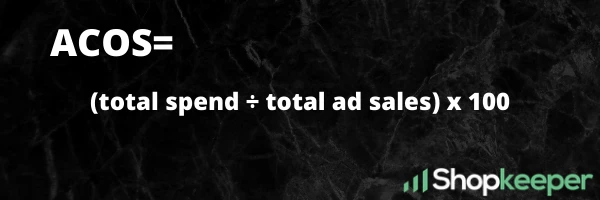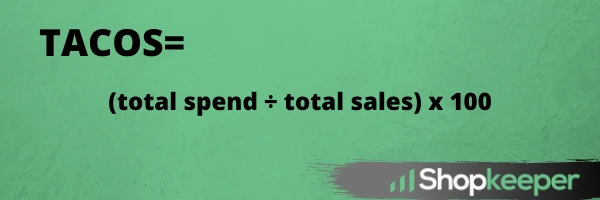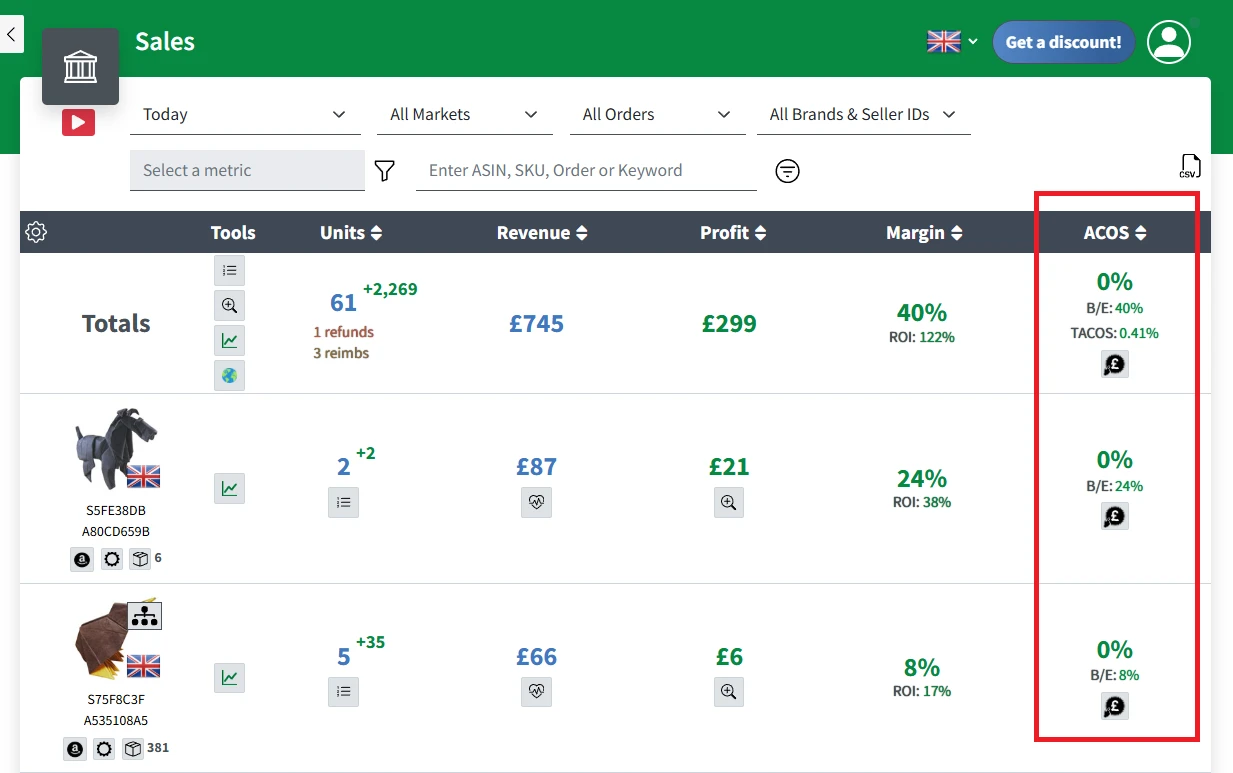Apr 27, 2025
Complete Guide to Amazon ACoS, TACoS and Break-Even Analysis with ShopKeeper
- ACoS (Advertising Cost of Sales)
- TACoS (Total Advertising Cost of Sales)
- Break-Even Analysis
- ShopKeeper Can Help!
As a seller in any online business, your marketing performance generally comes down to just two things:
-
Traffic: How many consumers are viewing your Amazon products?
-
Conversion: How many of the consumers viewing your Amazon products are actually buying them?
If you're looking to increase traffic to your Amazon listings, you've probably been told that you need to invest in pay-per-click advertising.
Yes, advertising on Amazon can be a great way to increase the traffic to your listings and ultimately sell more products and make more money. The only time you pay for the ads is when someone clicks on them. But while clicks and traffic to your listings are great, remember that at the end of the day, that's not enough. You need to generate sales to remain in business and thrive.
So how do we know if our ads are effective and the money we're putting out is actually coming back to us with sales?
We use three key metrics - ACoS, TACoS, and break-even analysis - to analyze our PPC spend. See below to learn more about them and how you can use them to grow your Amazon business.
ACoS (Advertising Cost of Sales)
Put simply, ACoS is a metric that tells you exactly how much money you're spending on ads that result in a sale. But how does Amazon decide that? They use what is called an attribution window.
Since ACOS deals with products sold directly from a PPC ad, it's important to understand the attribution windows used by Amazon and how they work. The standard attribution window that Amazon uses for sponsored products is 7 days, while the attribution window for sponsored brands is 14 days. What does this mean? If a user clicks on a PPC ad for a sponsored products and buys it within 7 days of the click, that ad will get the credit for the sale. The ad spend on that click goes into the numerator for ACOS and the revenue goes into the denominator. The same is true for sponsored brands but the sale can happen up to 14 days after the ad is clicked and Amazon will attribute it to the paid advertising you did.

ACoS is a great way to see exactly how your clicks are resulting in sales. For this number, you're hoping that it's as low as possible. For example, if you are selling a $20 product, and your ACoS number is below $5, that means you're making $15+ per sale. With those numbers, you are extremely profitable and can afford to bump up that PPC spend to reach more people!
ACoS is generally shown as a percentage of total sales. For example, if we spend $500 on ads that result in $1,000 in sales our ACoS would display as 50%. While this still means you're profitable in your ad spend, most Amazon sellers shoot for an ACoS of under %30 in order to scale and ultimately make the most revenue.
TACoS (Total Advertising Cost of Sales)
While ACoS provides you with the advertising cost for specific ads and their attribution window, TACOS takes a more holistic approach to show you your total sales from various sources against the costs of your advertising- not just the sales that Amazon attributes to your ad spend. After all, don't we care about sales as a whole, and not just attributable sales? Let's keep our eye on the big picture!
To calculate TACoS we look at all the sales from your products, regardless if it came from organic search, social media, paid ads, or any other source, and divide that number by your total advertising costs.

Since we know that not all ads result in sales, often times TACoS can be the best number to look at when looking at the effects of your advertising. Some people might have clicked on your product and waited 15 days to purchase it, this sale would not show up in your ACoS percentage when in reality the ad was effective in teaching the person about your product.
The TACoS metric captures the overall effect of your PPC ads and provides the full view on profitability from your PPC efforts.
Pop quiz: For a given level of PPC spend which metric will always be higher, ACoS or TACoS? Write to us if you'd like help with the answer.
Break-Even Analysis
Just like it sounds, Break-Even analysis will tell you the exact point at which your ads are profitable or they are not. To calculate the break-even point we need to identify the ACoS and profit margins to find our tipping point.
As a general rule, an ACoS higher than your profit margin means you're losing money on the campaign. In other words, you're spending more money on advertising than you are to make a sale. Not good! On the flip side, if your ACoS is lower than your profit margin that means your campaign is making you profit.
For example, if your profit margin (value of sale – Item cost) is 70% you have a lot of margin to play with and invest in advertising before you start losing. You could spend on PPC up to 70% of your ACOS and still not lose any money on marketing for the sales you generate.
ShopKeeper Can Help!
If you're not a math expert, the good news is that you don't have to be in order to understand ACOS, TACOS and you break-even point. All you have to do is connect your Amazon PPC account, and like magic we'll serve you all the metrics you need to make smart decisions as an Amazon seller.
We'll even show you the ACoS, TACoS, and break-even points for each product that you sell.

As you can see above, Shopkeeper users can automatically see their ACoS, TACoS and break-even percentage in their sales dashboard. In the example above, you’ll notice that our first product is showing an ACoS of 66% which is highlighted in red. This is because you are spending more on advertising costs than your break-even percentage. As I’m sure you can assume, we don’t like seeing those red numbers as that is a warning that your advertising is not as profitable as you would like it to be! On the flip side, when your ACoS is listed in green, that clearly shows that your spending less on advertising than your break-even point. Which means we are profitable and right where we want to be!
Our Amazon seller software makes things simple and does all of the heavy lifting for you. No math degree required.
Along with ACoS, TACoS, and break-even Shopkeeper provides several other metrics like profit margins and return on investment to help you make data driven decisions as an Amazon seller.
You can always reach out to us on customer support for guidance on these matters. Sign up now and let us help you!



